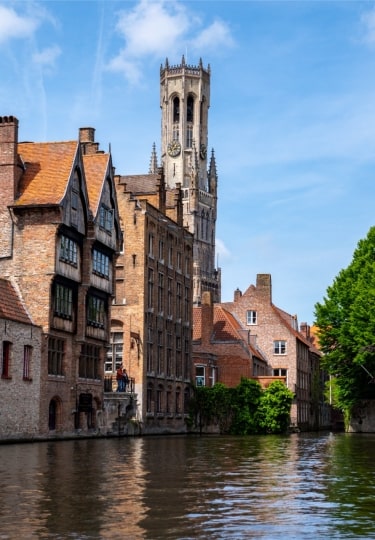Bruges is known for being one of the most beautiful cities in Belgium—if not all of Europe. The entire historic center is one big UNESCO World Heritage Site. That means you’ll find strikingly pretty architecture, some of which dates back to the Middle Ages. It can be hard to know which way to point your camera sometimes, as the entire area is almost impossibly picturesque.
In particular, Bruges is famous for the canals that have formed an intricate network through the old center for hundreds of years. Follow these waterways and you’ll find magnificent churches and basilicas, bustling markets, and so much more.
Here are just a few of the things that Bruges is known for.
Market Square
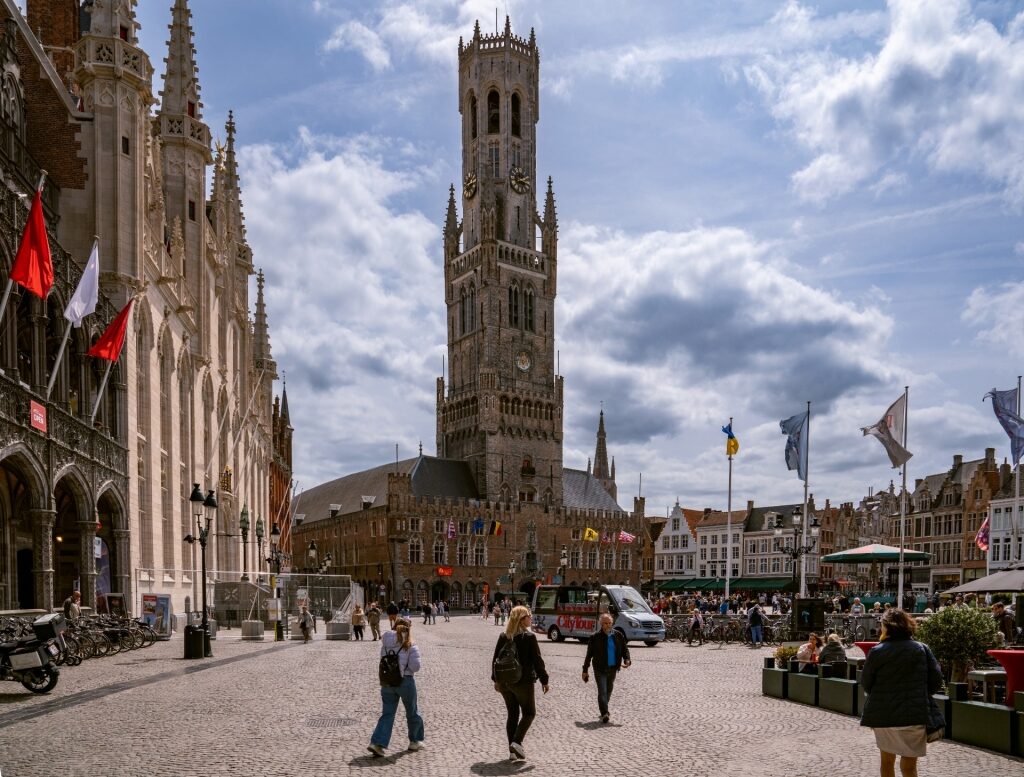
Market Square
Virtually every visit to Bruges starts with this picturesque central square. As with all of the historic city center, the jewel-box architecture here is beautifully preserved. Stepping into the square feels a bit like you’re on a film set, complete with horse-drawn carriages all around.
At the heart of the square, you’ll find the Belfry, an imposing 272-foot-tall tower that serves as something of a symbol for this beautiful city. In the Middle Ages, when this UNESCO World Heritage Site was first constructed, clock towers served a vital role for their communities. This was before timepieces were widely available, so life revolved around the tolling of the communal bells.

Belfry Tower
Experts believe that a tower has stood on this site since 1240, although the structure has been destroyed and rebuilt multiple times over the years. In 1486, an octagonal tower much like the current iteration was completed. The spire caught on fire shortly after, then again in 1741, when it was struck by lightning.
Canals

Bruges Canal
Bruges feels like a different city when seen by boat and you’ll discover corners of it you might not on foot. A knowledgeable guide can point out interesting architectural points—of which there are many—along the way.
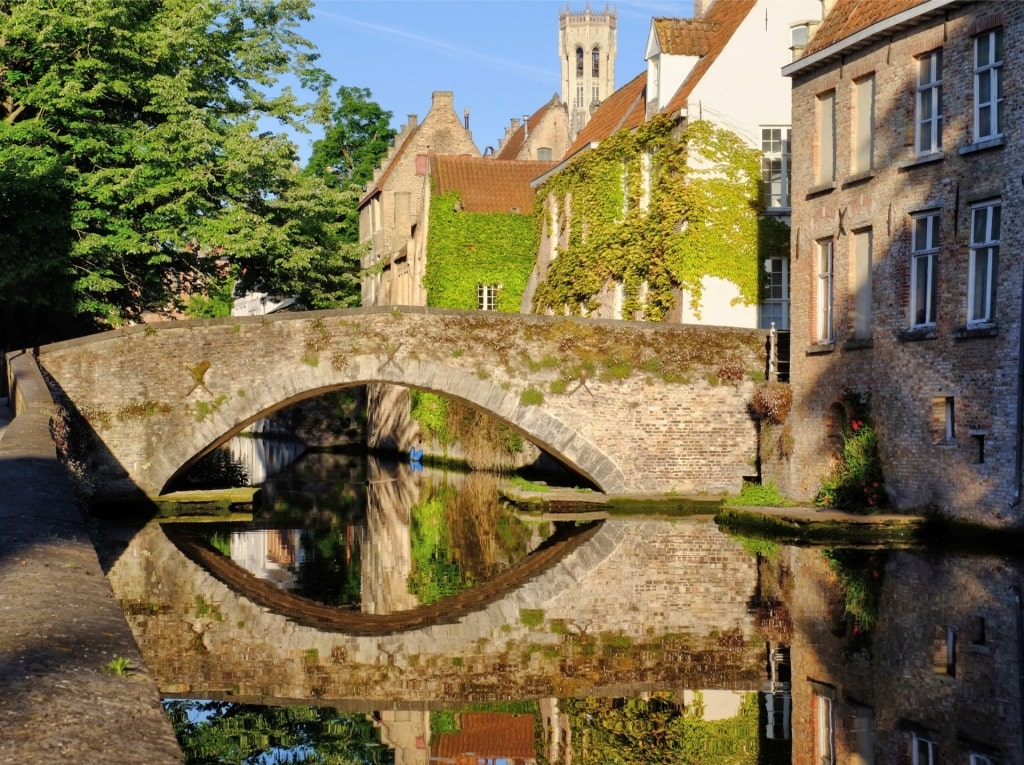
Groenerei
Some of these waterways have existed in Bruges since the ninth century, although most were put in place around the 12th century. Arguably the most beautiful of them all is the Groenerei, which winds through the heart of town with trees along its banks. Also very much worth seeing is the Gouden-Hand Rei, where the famous Flemish artist Jan van Eyck once lived. This serene canal runs along the root of the old fortified medieval city walls.
For the perfect photo-op along the water, head to Rozenhoedkaai, or Rosary Quay. In another era of the city’s history, this was where the faithful would sell rosaries. Today, it’s best-known for its absolutely lovely view—don’t be surprised if you catch a wedding photoshoot taking place here.
Frieten

Frieten
Although they’re known as French fries in the United States, the debate still rages as to whether the French or Belgians had the clever idea to deep-fry their potatoes in this manner. By some claims, there are reports of Belgians making the now iconic dish as early as the 17th century.
As is so often the case with food history, we’re unlikely to ever know the real answer. What we do know is that in present-day Belgium, fries are both ubiquitous and prized.
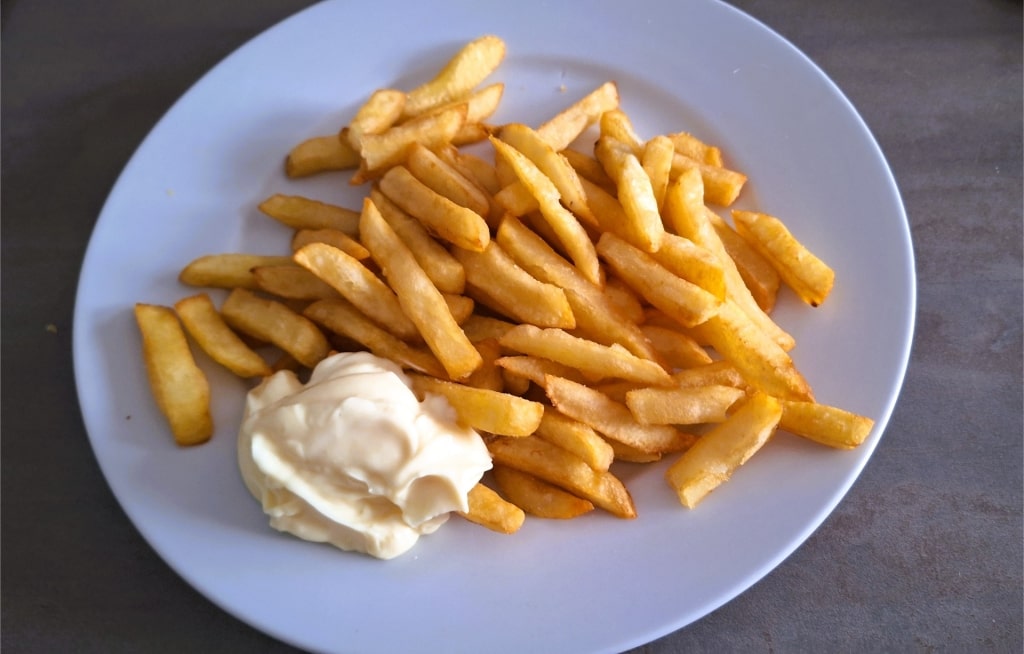
Frieten
What makes Belgian-style fries, known as frieten in Flemish or frites in French, so special is their optimal ratio of crunchy exterior to fluffy interior. They’re also such a point of pride that in Bruges and beyond, you’ll find stands dedicated only to the mighty fried potato. The best of these frieten are hand-cut and double-fried for maximum crispness. A dollop of mayonnaise is classic, although they can come with any of a dozen different sauces.
In Bruges, the humble fry is so celebrated that you can pay a visit to the Frietmuseum. The Belgian Fries Museum, as it’s known in English, is located in Saaihalle, a Gothic, Medieval masterpiece dating back to 1399. It’s great for children, especially since freshly fried snacks are available.
Groeninge Museum
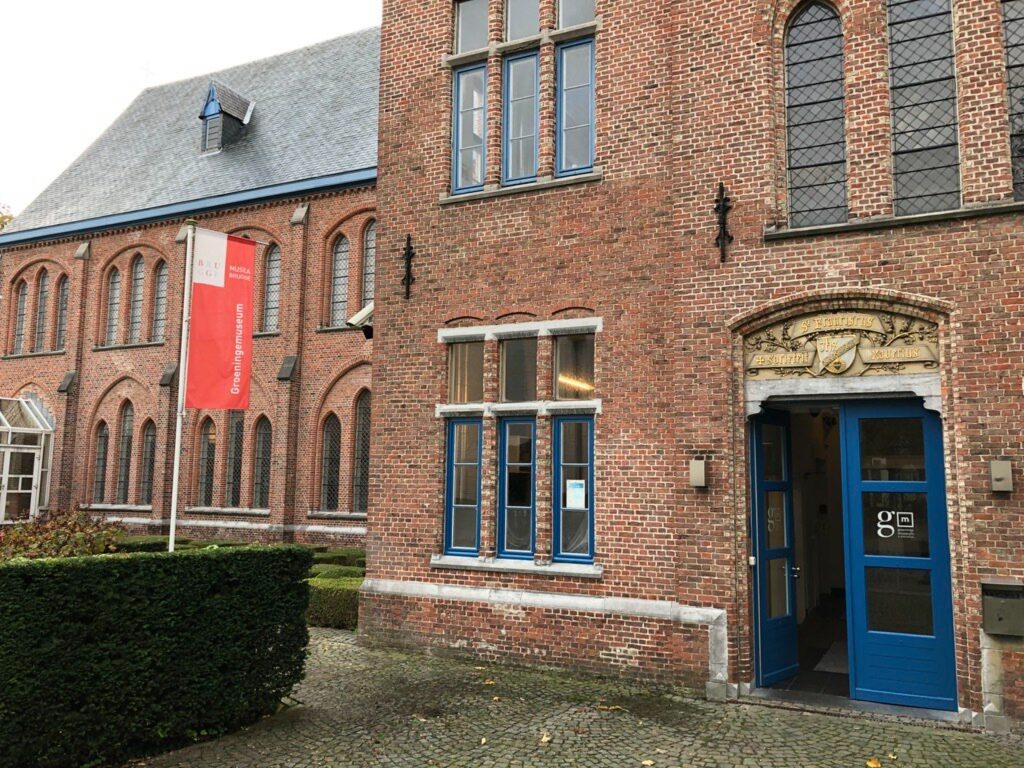
Groeninge Museum Photo by Dr Bob Hall on Flickr, licensed under CC BY-SA 2.0
From the 15th through early 18th centuries, Flemish painting was the envy of much of Europe. Oil painters here had a gift for capturing the extraordinary in everyday life. Their paintings were often laden with hidden symbolism and subtle double meanings.
The Groeninge Museum features one of the finest collections of Flemish and Belgian art in the world. The collection here spans more than 600 years, running from the Renaissance into post-war modern art. Of particular note is its collection of paintings by Jan van Eyck, known for his breakthrough techniques in oil painting.
Chocolate
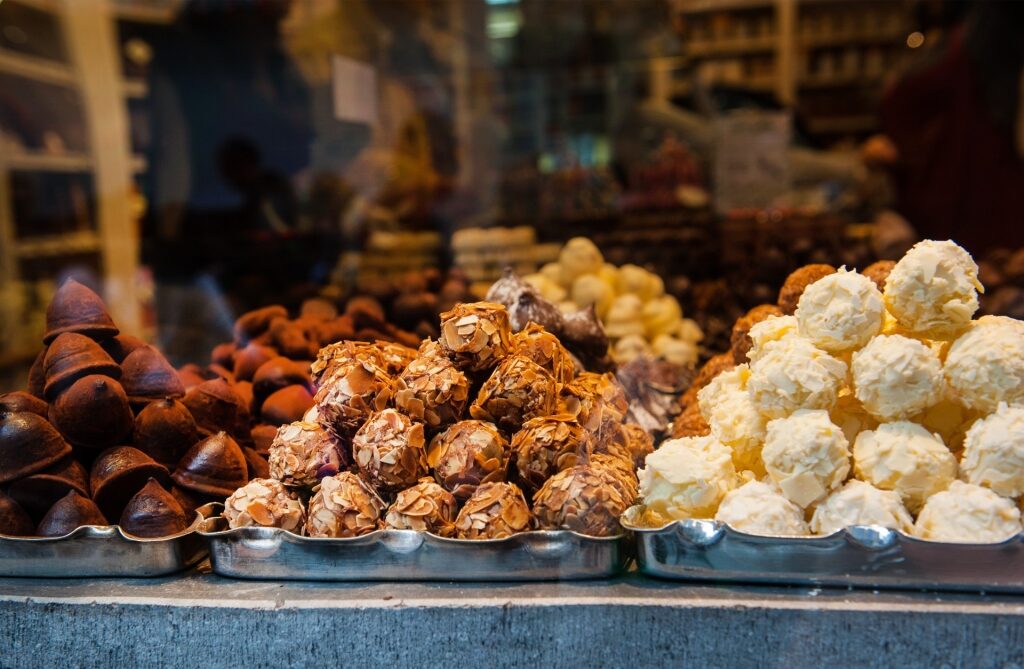
Belgian chocolates
Belgium may not have invented chocolate, but the country’s confectioners and patissiers have certainly elevated it to great heights. Much of this has to do with the fact that the Spanish occupied the nation in the 17th century. It was right around this time that conquistadors were bringing back the spoils of warfare and colonialism from Mesoamerica. One of these new imports was cacao beans, which soon became fashionable in Europe.
Although these cacao beans were initially served as a hot beverage, they gradually began to take one other form. In 1912, a chocolatier by the name of Jean Neuhaus II unveiled the praline, a luxe little bonbon with a hard chocolate shell and soft center. While there’s some debate as to whether or not he invented them, he certainly popularized them. In subsequent years, Belgian chocolatiers became renowned for their exquisitely filled treats.
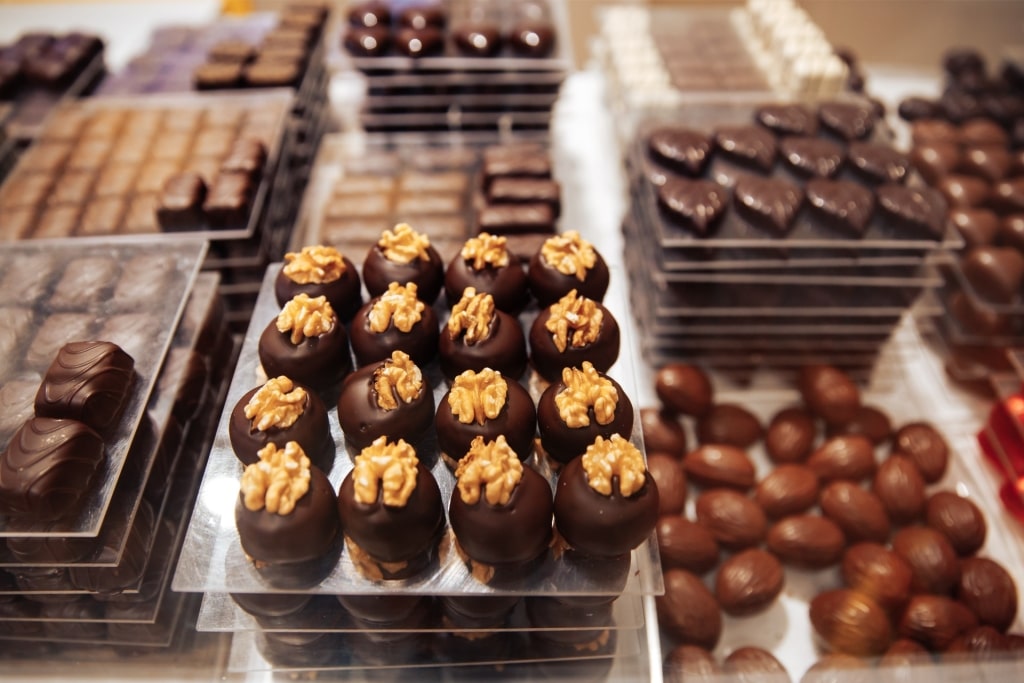
Belgian chocolates
To learn more about the history of chocolate, swing by the Choco-Story Museum. This small museum features interactive multilingual audio guides and, most importantly, samples. It’s a great quick stop, especially for families with children.
Kruispoort
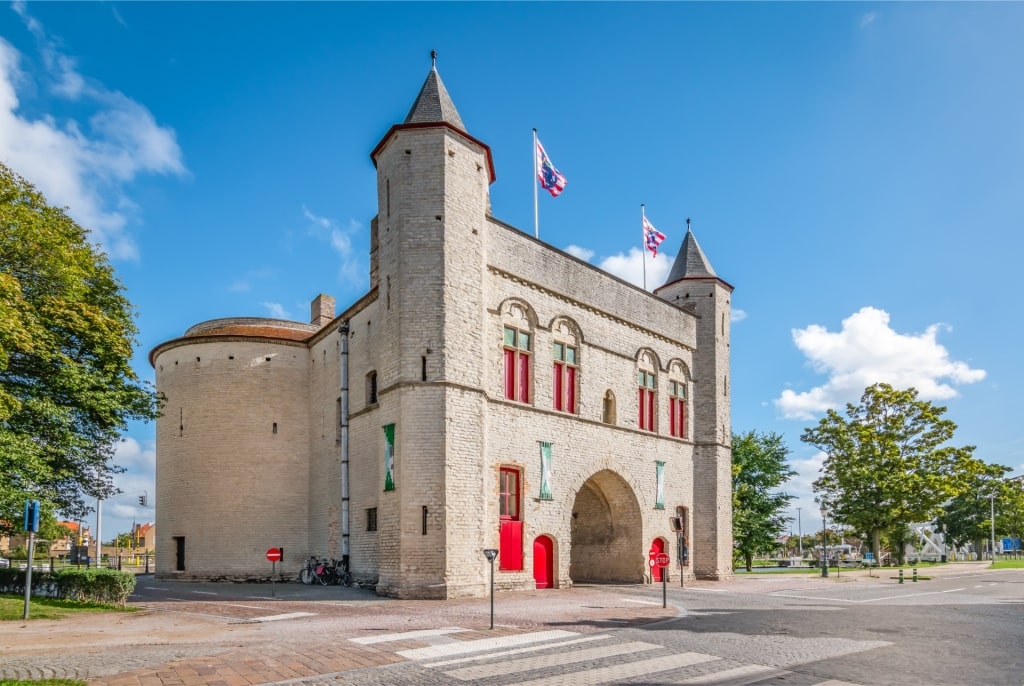
Kruispoort
What do the Holy Roman Emperor Charles V and Napoleon Bonaparte have in common? Both walked through this imposing gate into Bruges. A fortified gate has protected the city from this site since the 1200s, although the current iteration was built in 1400.
With its impressive turrets, the Kruispoort, or Cross Gate, can be spotted from afar. The gate is free to visit and well worth a quick stop as part of a larger city tour.
Read: What Is Belgium Known For?
Beer

Beer
What is Bruges famous for? In a word, beer. For sheer diversity of styles, level of craft, and depth of history, few if any beer-brewing cultures in the world can rival Belgium. There’s a reason why UNESCO added Belgian beer culture to its list of intangible cultural heritage of humanity in 2016.
Part of what makes Belgian brewing so exceptional is that the country has never succumbed to mega breweries. Unlike, say, Germany, where a few larger breweries control much of the market, Belgium has more than 300 breweries, many of which are independent operations.
Many of the most famous breweries have been in the same families or monasteries for generations. It also helps that Belgian brewers have long embraced many different methods, including spontaneous fermentation using wild yeasts.
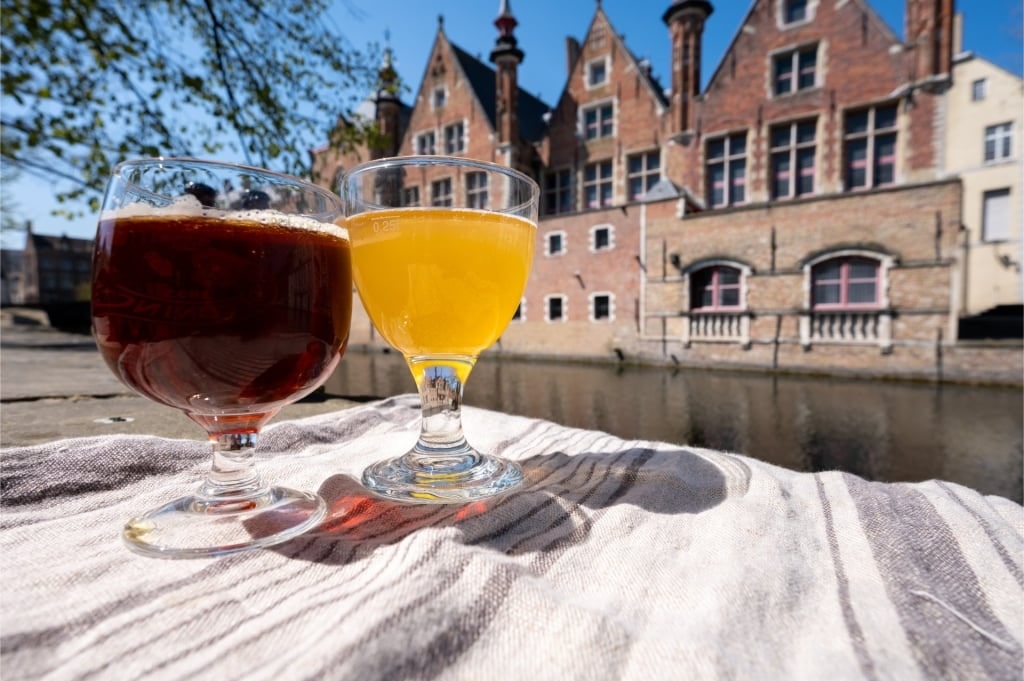
Beer
Beer connoisseurs should check out Brouwerij “Bourgogne des Flandres,” where visitors can get a behind-the-scenes look at the brewing and distilling process. The brewery even offers the opportunity to create your own beer by blending together different batches. At the end, you get to keep a bottle, complete with a custom logo.
You can also pay a visit to Brouwerij “De Halve Maan,” a sixth-generation family business in the heart of the city. This particular brewery is near and dear to the hearts of locals, since it’s where the city beer of Bruges is made. Brugse Zot has a strong, distinctive taste and a devoted following in Bruges. It comes in a few different variations, including a blonde and a dubbel, which visitors are able to taste on the tour.
Swans

Swans
Whether you opt to take a boat tour or simply walk alongside the canals, you’re inevitably going to catch a glimpse of some of Bruges’ most famous residents: swans. These majestic white birds can be seen paddling languidly through the city’s canals. They’ve been a fixture in town since the 1400s and were long associated with great wealth and status.
According to one legend, when the whole city of Bruges rose up against Austrian imperial rule, the Emperor Maximilian decreed that the city must always keep 101 white swans alive. Should anything happen to the birds, the city would fall. While no one believes the story, it’s become a point of pride and tradition. The local authorities make sure that there are always more than 100 swans thriving in their waterways.
Minnewaterpark
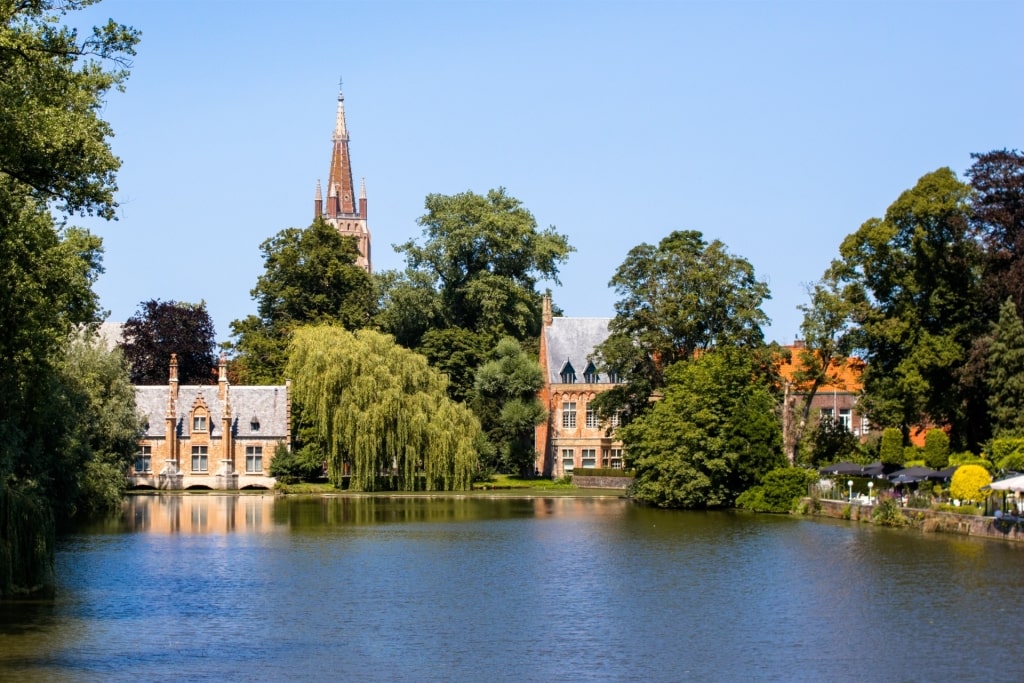
Minnewaterpark
A great place to admire swans is the Minnewaterpark, or the Lake of Love Park. By far one of the loveliest city parks, this lush green space is where locals go to kick back on sunny afternoons. It’s a little outside of the historic city center, but very easy to get to, particularly on a rented bicycle.
Aside from its charismatic avian inhabitants, the park is also home to the Princely Beguinage Ten Wijngaerde, a UNESCO World Heritage Site. Founded as a convent in the 13th century, the space is still only home to women. Note that the inhabitants here go about much of their days in silence. Visitors are asked to do the same on the premises out of respect.
Churches
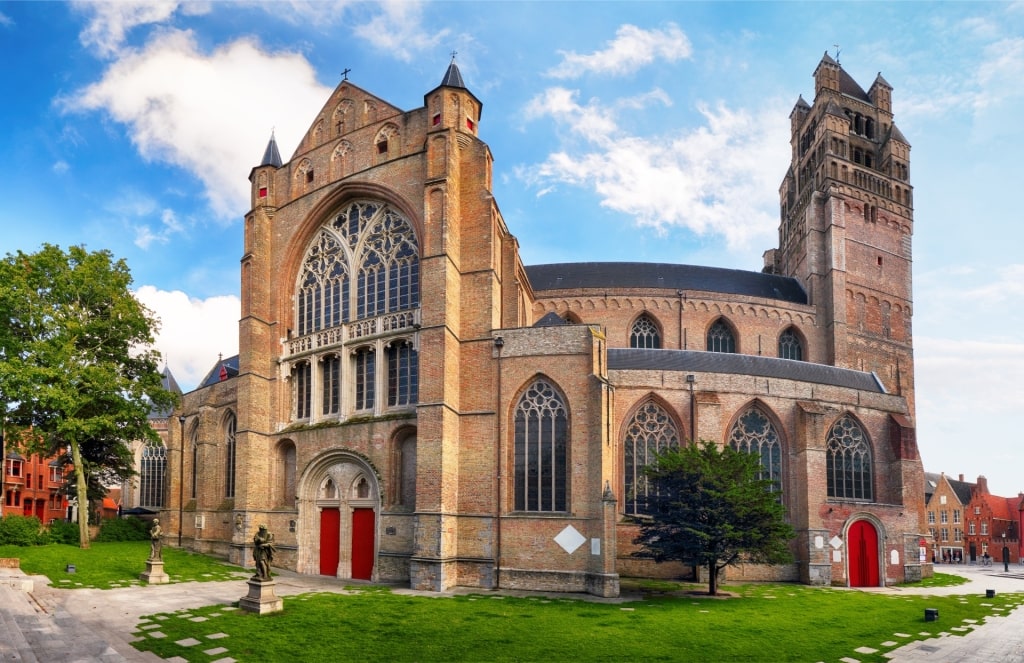
Saint Saviour’s Cathedral
Bruges is home to many centuries-old churches, a number of them lavishly decorated. The most famous is the Sint-Salvatorskathedraal, or Saint Saviour’s Cathedral, which is the oldest parish church in the city. With its high, vaulted ceilings, stained glass windows, and extraordinarily intricate decorations, this belongs on every traveler’s must-see list.
The Roman Catholic cathedral features Romanesque, Gothic, and Neo-Gothic elements. It also houses tapestries and paintings by some of the most important Flemish artists. Also of note is the immense pipe organ.
The Basilica of the Holy Blood features stunning Romanesque and Gothic architectural elements. The upper chapel here houses the Relic of the Holy Blood—allegedly brought back from the Holy Land by the crusaders. An onsite museum showcases original paintings and exquisitely crafted artifacts from the church.

Church of Our Lady
Finally, the Church of Our Lady, or the Onze-Lieve-Vrouwekerk, another grand Roman Catholic cathedral, is home to the city’s symbolically important Belfry. That makes it the owner of the second-highest brick church tower in the world. Even after you’ve scaled the 366 steps to the top, however, there’s much to see here.
The 13th and 14th crypt features some remarkable paintings. There’s even a marble sculpture of the Madonna and Christchild by Michelangelo himself.
Read: Best Things to Do in Bruges
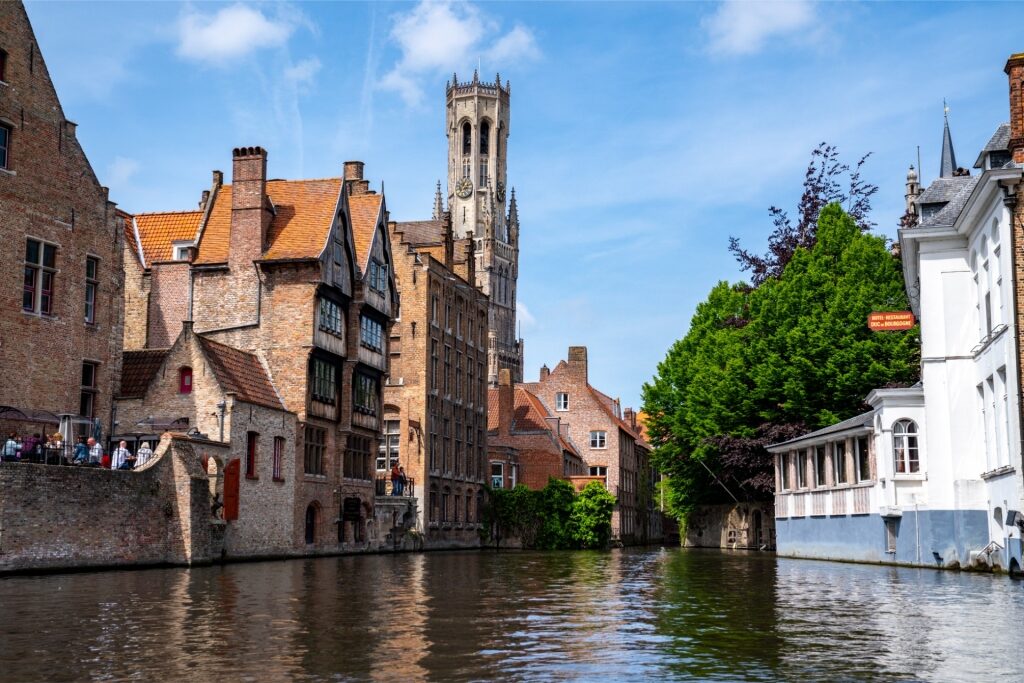
Bruges Canal
Whether you’re interested in history, culture, or just delicious food and drink, Bruges has much to offer. Browse Celebrity’s cruises to Bruges and book your dream voyage today.
